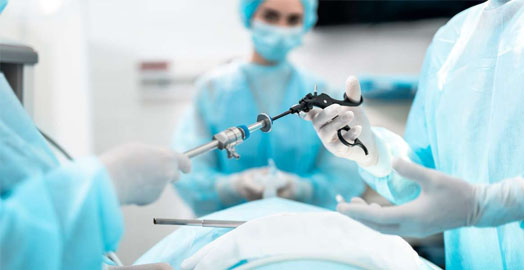 Laparoscopic surgery is a surgical technique that is practiced through small incisions, using the assistance of a video camera that allows the medical team to see the surgical field within the patient and act on it.
Laparoscopic surgery is a surgical technique that is practiced through small incisions, using the assistance of a video camera that allows the medical team to see the surgical field within the patient and act on it.
These techniques are called minimally invasive or minimally invasive, since they avoid the large scalpel cuts required by open or conventional surgery and therefore allow a much faster and more comfortable post-operative period.
The surgery is performed thanks to a video camera that is inserted into the body through an incision. This very small camera has a cold light source that illuminates the surgical field within the body.
Its applications are diverse and its field of action is expanding every day due to the benefits we have already mentioned. It can be used in abdominal, joint, gynecological, thoracic surgery, etc.
In the case of abdominal laparoscopy, for example, it is necessary to make other small incisions through which the fine instruments with which the surgeon will perform the intervention are inserted. They are the instruments that are generally used in a traditional intervention, such as forceps, scissors, spacers, sutures, etc., but they have a greater length and are extremely thin to be able to be maneuvered comfortably through small holes.
Sometimes it is necessary to inflate the abdominal cavity with gas (CO2) raising the muscular wall and compressing the organs towards the back. In this way you can see inside the abdomen, without the organs obstructing the field of the camcorder.
One of its most frequent uses is cholecystectomy, that is, the operation by which the gallbladder is removed. About 85% of cholecystectomies are performed laparoscopically today. However, it cannot be used in cases in which there are stones (lithiasis) inside the bile ducts, and traditional or open surgery must be used.
A percentage of patients suffering from reflux esophagitis and hiatal hernia must undergo surgery. One of the most effective surgical techniques is that of Nissen, which is also performed by the laparoscopic method.
Laparoscopy has also proven to be extremely useful for joint operations, especially of the knee.
One of the techniques for definitive control of obesity, which consists of the placement of an adjustable band that compresses the stomach to reduce its capacity, is also possible through laparoscopic surgery.
The field of minimally invasive techniques is growing every day, and it is expected that more and more interventions will be performed laparoscopically or other alternative surgical techniques, such as cryosurgery and laser techniques, since what is sought is reduction of post-operative inconveniences.